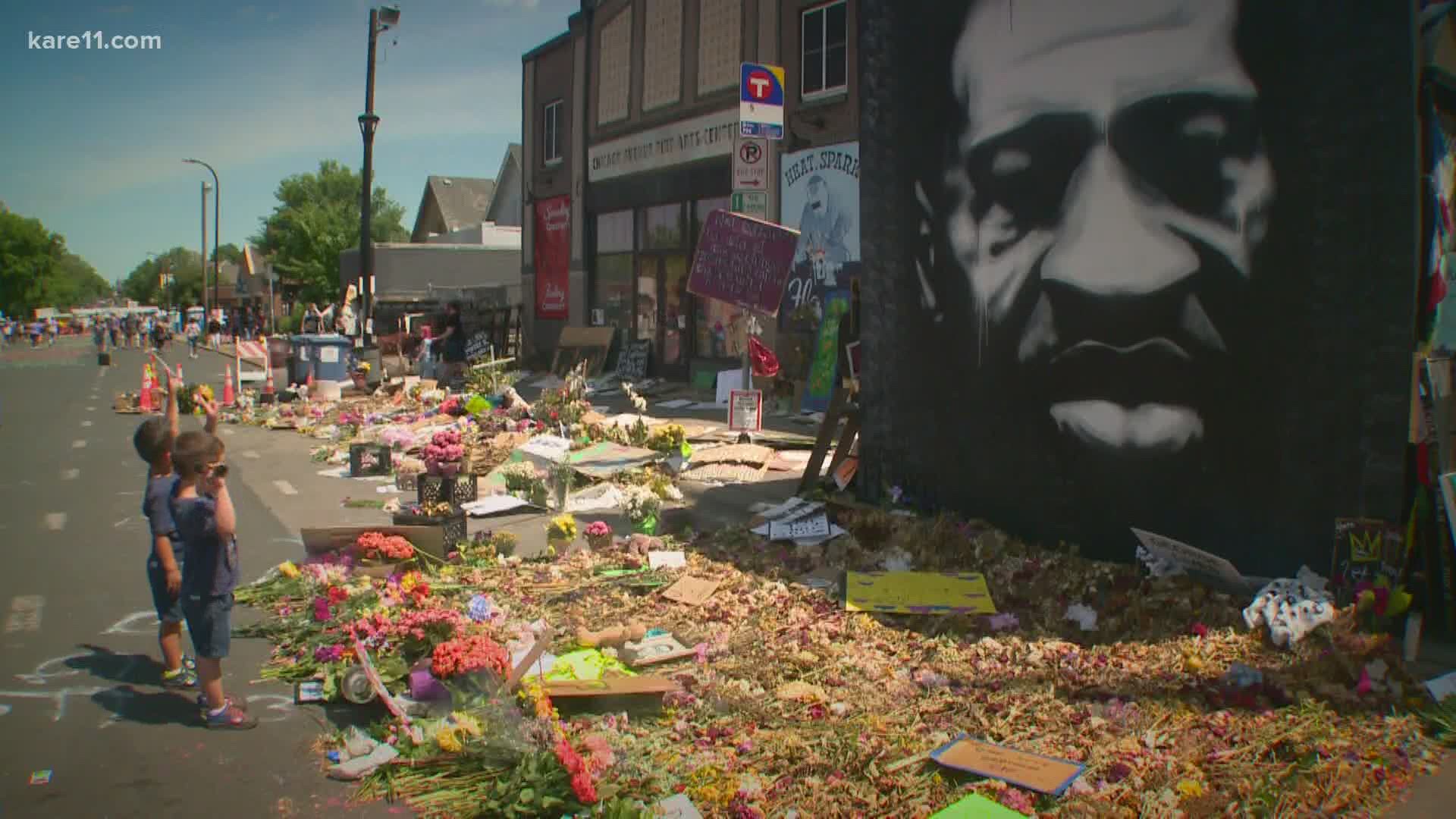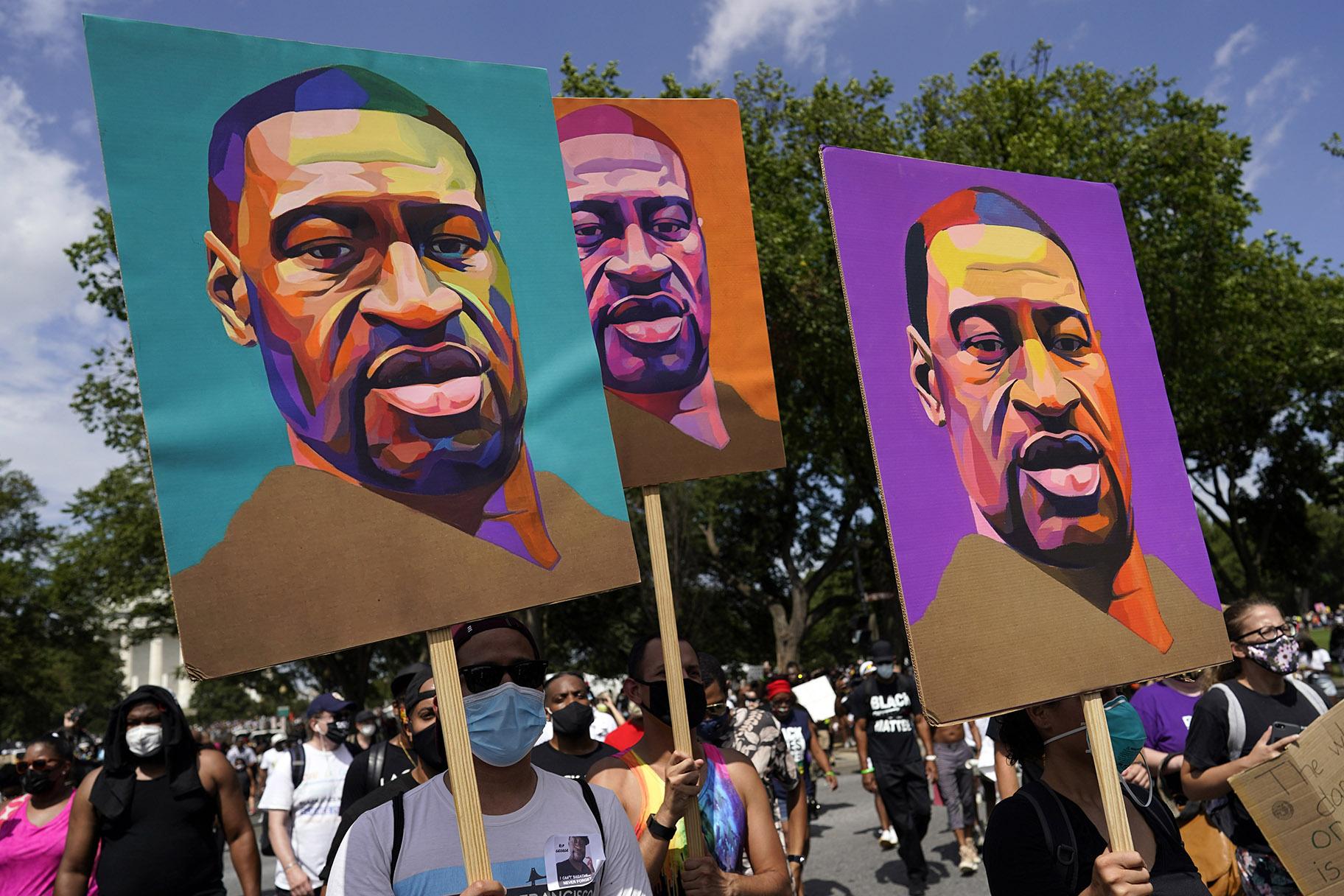
Background and Context
Introduction to George Floyd's Death
George Floyd was an African American man who tragically lost his life on May 25, 2020, in Minneapolis, Minnesota. A video recording showed a police officer, Derek Chauvin, kneeling on Floyd's neck for an extended period during an arrest, leading to his death. This incident sparked outrage and ignited a global movement against police brutality and racial injustice.
Social and Racial Justice Movement
Following George Floyd's death, protests and demonstrations erupted worldwide, advocating for justice and equality. The movement amplified the voices of marginalized communities, demanding an end to systemic racism and police misconduct. It brought attention to long-standing issues and created a platform for discussions on social and racial justice.
The memorial for George Floyd became a symbolic space for people to pay their respects and show solidarity with the movement. It served as a gathering place for peaceful protests, fostering community and promoting dialogue on necessary changes for a more equitable society. The George Floyd memorial became a powerful symbol of resilience and a catalyst for societal transformation.

The Memorial Service
Location and Date
The memorial service for George Floyd took place on June 4, 2020, in Minneapolis, Minnesota. It was held at the Frank J. Lindquist Sanctuary at North Central University. This location was chosen as a symbolic representation of the community's commitment to justice and equality.
Attendance and Speakers
The memorial service was attended by thousands of people from all walks of life, including family, friends, activists, and public figures. Reverend Al Sharpton delivered a powerful eulogy, calling for systemic change and an end to racial injustice. Other speakers such as Attorney Ben Crump and civil rights activist Tamika Mallory also addressed the audience, sharing messages of hope, unity, and the need for lasting change.
The memorial service provided a space for mourning, reflection, and a call to action. It served as a poignant reminder of the urgent need to address systemic racism and police violence, inspiring countless individuals to continue the fight for justice and equality.

Eulogy and Tributes
George Floyd's Life and Achievements
In remembering George Floyd, it is important to reflect on his life and the impact he had on those around him. George Floyd was a beloved father, brother, and friend. He was known for his kind heart, generosity, and dedication to his family. Beyond his personal relationships, George also made a significant impact in his community. He worked as a community mentor, providing guidance and support to young people. His commitment to social justice and equality was evident in his activism and participation in peaceful protests. George's life serves as a reminder of the importance of compassion, unity, and the ongoing fight for justice.
Emotional Tributes from Loved Ones
During the memorial service, loved ones came forward to pay tribute to George Floyd. Their heartfelt speeches and stories provided a glimpse into the impact he had on their lives. Family members shared cherished memories of George and spoke of his unwavering love and devotion. Friends described him as a pillar of strength and a source of inspiration. The tributes highlighted George's enduring legacy and the void he left behind. These emotional testimonials served as a reminder that George Floyd's life mattered and that his memory will continue to inspire and drive the ongoing pursuit of justice and equality.
Symbolism and Messages
Memorial Artwork and Displays
The memorial for George Floyd was not only a place of remembrance but also a space for artistic expression. Various artworks and displays were created to honor his life and the movement for justice. One powerful example was the mural depicting George Floyd's face, painted on a wall near the site where he was tragically killed. The mural portrayed his image with a halo, symbolizing his status as a martyr. It served as a visual reminder of the impact he had on the world and the ongoing fight for justice.
Messages of Hope and Unity
Amidst the grief and heartache, messages of hope and unity emerged during the memorial for George Floyd. People from all walks of life came together to demonstrate their support for justice and equality. Signs and banners with messages such as "Black Lives Matter" and "No Justice, No Peace" adorned the memorial site. These messages echoed the collective determination to create a more inclusive and just society. They represented a call to action and a reminder that the fight for justice should continue beyond this memorial, as everyone has a role to play in creating a more equal world.

Public Reaction and Support
Outpouring of Support from Communities
The memorial for George Floyd ignited an outpouring of support from communities worldwide. People from all walks of life came together to honor his life and stand in solidarity against racial injustice. The memorial site became a gathering place for individuals to express their grief, anger, and determination for change. Flowers, candles, and personal tributes adorned the space, creating a sense of unity and remembrance. The community's response to George Floyd's memorial exemplified the power of collective action and the demand for justice and equality.
Impact on Global Awareness and Change
The memorial for George Floyd had a profound impact on global awareness and sparked a movement for change. News of his tragic death and the subsequent protests spread rapidly, generating conversations about systemic racism and police brutality on a global scale. The memorial served as a catalyst for discussions about social injustice and prompted individuals and organizations to reevaluate their own roles in promoting equality. It inspired countless individuals to educate themselves, engage in activism, and support organizations working towards systemic change. The worldwide response to George Floyd's memorial demonstrated the potential for collective action to drive meaningful and lasting change.

Calls for Justice and Police Reform
Protests and Demands for Accountability
The memorial for George Floyd not only sparked a grieving process but also ignited a wave of protests and demands for justice and accountability. In the days and weeks following his death, cities across the United States and around the world witnessed mass demonstrations calling for an end to systemic racism and police brutality. The protesters emphasized the need to hold law enforcement officers accountable for their actions and demanded comprehensive police reform. These protests served as a powerful display of unity and determination, demonstrating that the fight for justice will not waver until meaningful change is achieved.
Legislative Actions and Policy Changes
George Floyd's memorial also had a significant impact on legislative actions and policy changes. In response to the global outcry, many municipalities and governments introduced reforms aimed at ensuring accountability and preventing similar incidents in the future. These reforms included banning chokeholds and other dangerous restraint techniques, implementing stricter guidelines for the use of force, and establishing independent oversight bodies to investigate misconduct allegations against law enforcement officers. The push for legislative change in the wake of the memorial reflected a collective determination to reshape the criminal justice system and promote equal treatment under the law.

Continuing the Legacy
George Floyd Foundation and Activism Initiatives
The memorial for George Floyd not only sparked a global movement for justice and police reform but also inspired the establishment of the George Floyd Foundation. The foundation aims to honor Floyd's memory by funding initiatives that address systemic racism, police brutality, and social injustice. With the goal of promoting lasting change, the foundation supports community programs, educational initiatives, and activism efforts that advocate for equality and accountability. Through these initiatives, the George Floyd Foundation seeks to amplify the voices of marginalized communities and work towards a more just and inclusive society.
Continuing the Conversation and Education
The impact of George Floyd's memorial extends beyond legislative actions and policy changes. It has stimulated a much-needed conversation about racial inequality and police violence. This conversation has prompted individuals, communities, and organizations to actively educate themselves about the history of systemic racism and the experiences of marginalized groups. By engaging in dialogue, listening to diverse perspectives, and challenging ingrained biases, people can contribute to dismantling racist structures and fostering a more inclusive society. The legacy of George Floyd's memorial lies not only in demanding justice but also in inspiring ongoing education and dialogue to create lasting change.

Healing and Moving Forward
Community Healing and Support Services
The memorial for George Floyd has not only sparked a global movement for justice and police reform but also served as a call to action for community healing and support. In the wake of his tragic death, various organizations and individuals have come together to offer support services to traumatized communities. These services include counseling, therapy, and resources for mental health and emotional well-being. By providing a safe space for individuals to process their grief and emotions, these initiatives aim to foster healing and resilience within affected communities.
Creating Lasting Change and Preventing Future Tragedies
The legacy of George Floyd's memorial lies in its ability to inspire lasting change and prevent future tragedies. Advocacy groups, activists, and policymakers have utilized this momentum to push for comprehensive police reforms, including increased accountability, training, and the reimagining of public safety. By addressing the root causes of systemic racism and police violence, they strive to create a society where every individual, regardless of their race, feels safe, protected, and treated with dignity. Through continued activism and tangible reforms, the hope is to prevent future tragedies and build a more just and equitable society for all
Conclusion
The George Floyd memorial has served as a catalyst for change, sparking a global movement for justice and police reform. It has also highlighted the need for community healing and support in the face of tragedy. Through counseling, therapy, and resources for mental health, affected communities have been able to find solace and resilience.
Reflection on the George Floyd Memorial
The memorial for George Floyd has brought people together to reflect on the impact of systemic racism and police violence. It has served as a powerful reminder of the urgent need for change in our society. The memorial has also provided a space for individuals to mourn, grieve, and process their emotions, fostering healing within communities.
Inspiring Change and Promoting Equality
The legacy of the George Floyd memorial lies in its ability to inspire lasting change and promote equality. Advocacy groups, activists, and policymakers have seized this moment to push for comprehensive police reforms, aiming to address the root causes of systemic racism and prevent future tragedies. By working towards increased accountability, training, and the reimagining of public safety, they strive to create a more just and equitable society where every person feels safe, protected, and treated with dignity.
The George Floyd memorial has ignited a spark, and through continued activism and tangible reforms, we can build a better future for all.
No comments:
Post a Comment